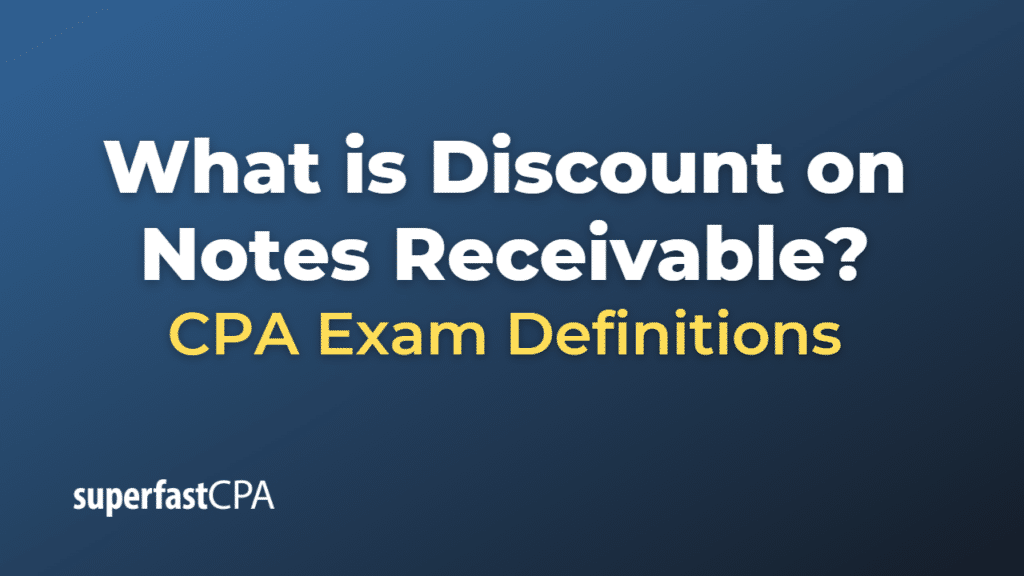Discount on Notes Receivable
“Discount on Notes Receivable” is a contra asset account associated with notes receivable. This concept is often encountered in the context of note discounting or selling a note receivable to a bank or other financial institution before it matures.
When a business has a note receivable, it means it’s owed money under the terms of a promissory note, which is a written promise of payment from another entity. Sometimes, the business might need cash before the note matures. In such cases, the business can sell the note to a bank at a discount. The difference between the note’s face value and the cash the business receives is the “discount,” and it’s recorded in a Discount on Notes Receivable account.
The Discount on Notes Receivable represents the interest income that the bank expects to earn, and it’s the cost the business pays for getting immediate cash. The discount is recognized as interest expense over the life of the note for the business that discounted the note.
For example, if a business has a $10,000 note receivable that matures in 1 year and sells it to a bank for $9,500, it would debit Cash for $9,500, debit Discount on Notes Receivable for $500, and credit Notes Receivable for $10,000. Over time, the business would amortize the $500 discount and recognize it as interest expense.
For the bank purchasing the discounted note, the situation is reversed. The bank would record the note at its maturity value and recognize the discount as interest income over the life of the note.
Example of Discount on Notes Receivable
Let’s say a company, XYZ Inc., holds a 1-year note receivable from a customer for $10,000. The note carries an interest rate of 5%, but due to an urgent need for cash, XYZ Inc. decides to sell the note to a bank. However, the current market interest rate is 10%, which is higher than the interest rate on the note.
Because of this higher market rate, the bank is willing to pay less than the face value for the note. The bank agrees to pay XYZ Inc. $9,500 for the note, a $500 discount from its face value.
Here’s how XYZ Inc. would record this transaction:
- Debit Cash for $9,500 (the cash received)
- Debit Discount on Notes Receivable for $500 (the discount)
- Credit Notes Receivable for $10,000 (to remove the note receivable from the books)
Over the life of the note, the $500 discount would be amortized and recognized as an additional interest expense for XYZ Inc. For example, if the discount is amortized evenly over the 12 months of the note’s term, XYZ Inc. would make the following entry each month:
- Debit Discount on Notes Receivable for $41.67 ($500 discount ÷ 12 months)
- Credit Interest Expense for $41.67
By the time the note matures, the entire $500 discount would be recognized as interest expense, increasing the total cost of financing for XYZ Inc. This additional interest expense effectively brings the interest rate on the note up to the market rate of 10%.
On the other side, the bank would record the note at its maturity value of $10,000, and over time, it would recognize the $500 discount as interest income. This is the income the bank earns for providing immediate cash to XYZ Inc. and taking on the risk and the time value of money associated with the note.













